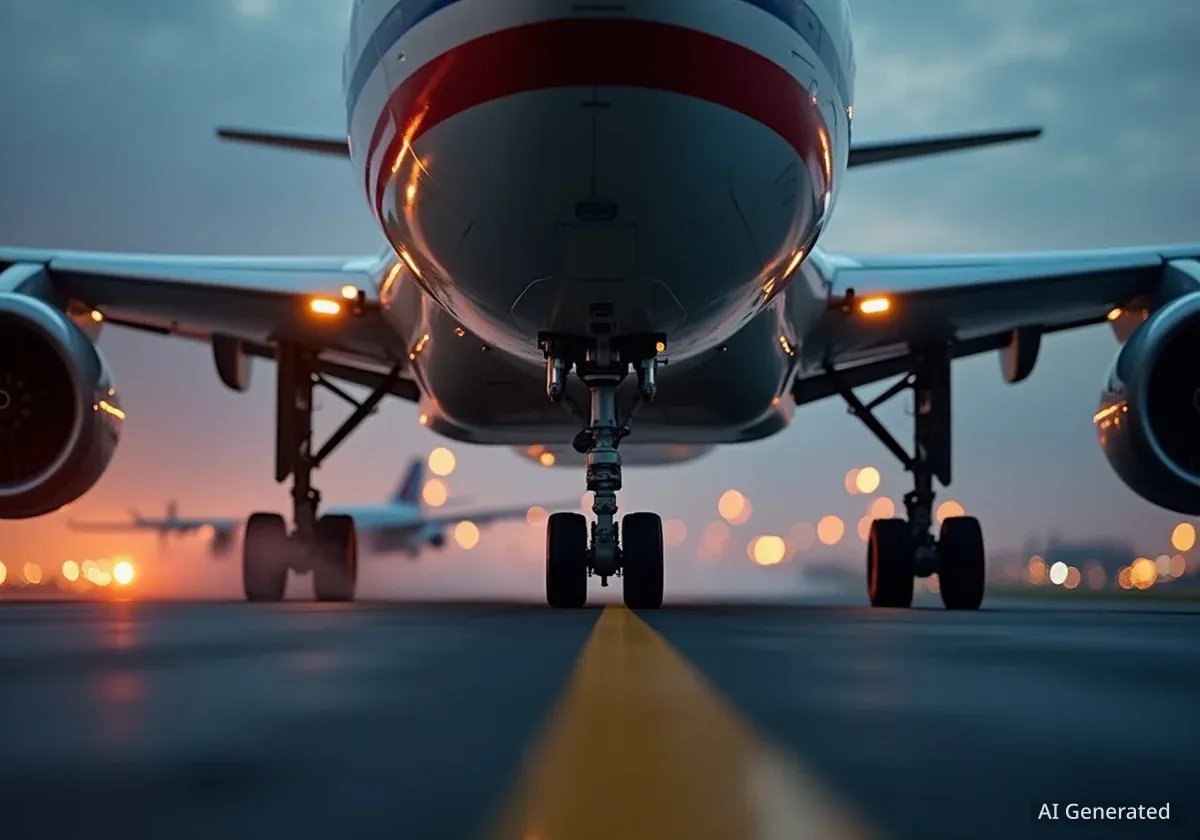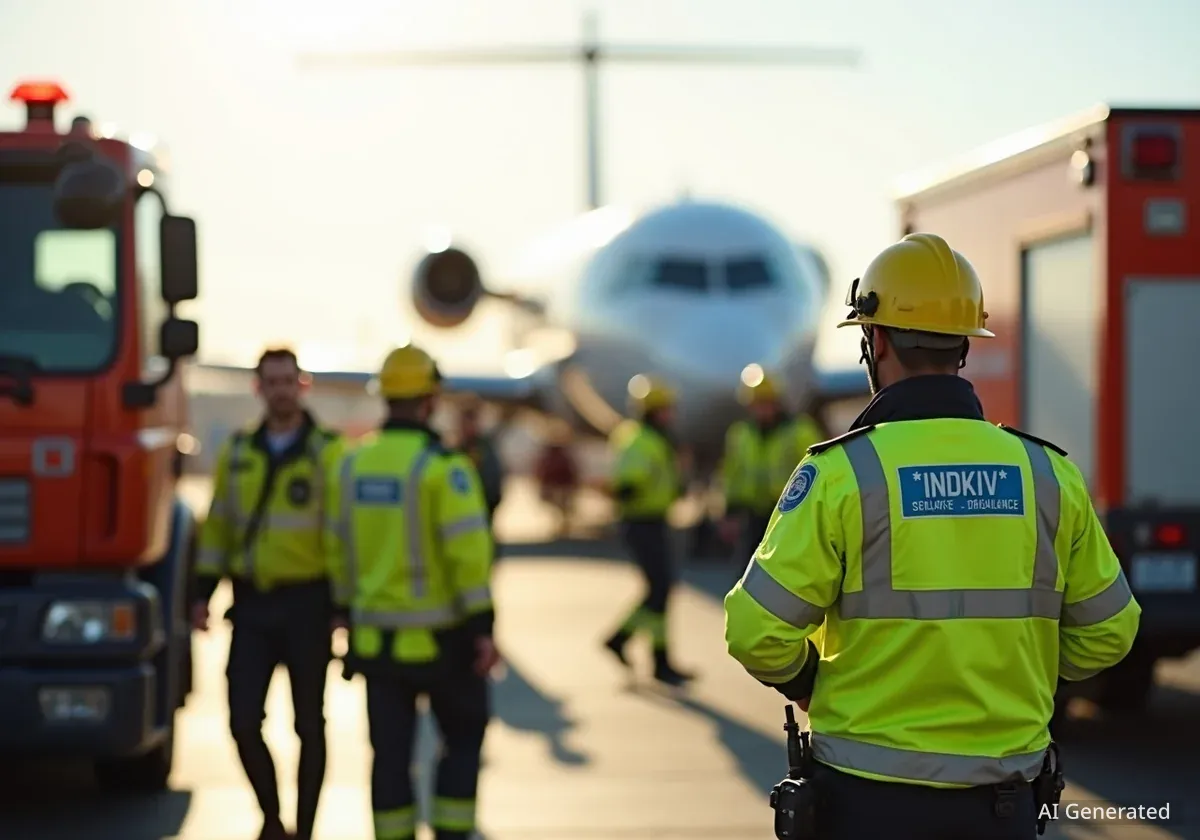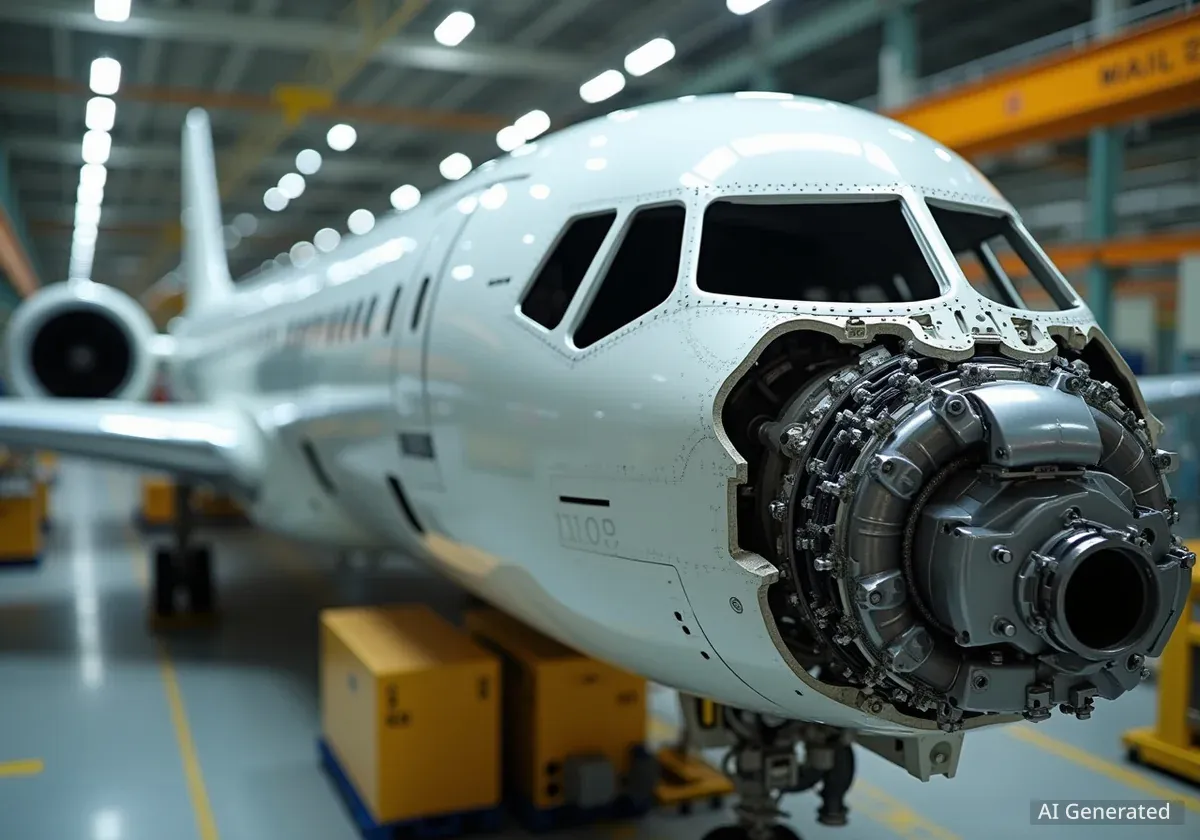An American Airlines flight preparing for takeoff at Los Angeles International Airport (LAX) on Sunday had to abort its departure. The pilot initiated an emergency stop after a cargo plane unexpectedly crossed the runway directly in its path. This incident highlights the critical importance of air traffic control directives and pilot vigilance in maintaining airport safety.
Key Takeaways
- An American Airlines flight aborted takeoff at LAX.
- A cargo plane crossed the runway without authorization.
- The American Airlines jet was traveling at 167 miles per hour.
- Air traffic control issued urgent commands to stop the cargo plane.
- The American flight departed 2.5 hours later.
Details of the Runway Incident at LAX
The event occurred at approximately 10:33 p.m. local time on Sunday. American Airlines Flight 2453 was preparing for its journey to Boston. Simultaneously, AeroLogic Flight 619, a Boeing 777 cargo plane, had just arrived at LAX from Shanghai, China. AeroLogic is a joint venture between Lufthansa Cargo and DHL.
According to audio captured from LiveATC.net, air traffic control at LAX instructed the AeroLogic flight, using the callsign "German Cargo 619," to cross runway 25L. However, the cargo plane's pilots made an incorrect right turn. This maneuver placed their aircraft directly in the path of the American Airlines jet on runway 25R.
"German Cargo 619, Stop," the LAX air traffic controller urgently commanded, as heard in the LiveATC audio. The cargo pilot responded, "We are on the runway."
Incident Fact
The Federal Aviation Administration (FAA) confirmed that the AeroLogic flight crossed runway 25R "without authorization."
American Airlines Pilot's Quick Response
The American Airlines pilot demonstrated swift action. As the cargo plane entered the runway, air traffic control immediately rescinded the takeoff clearance for Flight 2453. The controller stated, "American 2453, cancel takeoff clearance."
The American Airlines pilot quickly acknowledged, "2453 is stopping." Data from flight tracking site Flightradar24 shows that the American Airlines jet had reached a speed of approximately 167 miles per hour before the pilot applied the brakes. The aircraft came to a stop about 1.3 miles away from the unauthorized cargo plane.
Air Traffic Control Procedures
Air traffic controllers are responsible for preventing collisions by issuing clear instructions for taxiing, takeoff, and landing. Pilots must follow these instructions precisely. Any deviation can lead to serious safety risks, as seen in this incident.
Aftermath and Investigation
Following the incident, the American Airlines flight returned to its gate. It eventually departed for Boston approximately 2.5 hours late. The airline issued a statement thanking its crew and customers.
"We thank our crew members for their quick action and our customers for their understanding," American Airlines stated.
The exact reason for the AeroLogic cargo flight's incorrect turn remains unclear. However, audio recordings suggest some potential factors. At times, the air traffic controller referred to the cargo flight as "419" instead of its correct callsign, "619." Additionally, the controller urged the pilot to cross the runway "as fast as you can" due to other aircraft landing. These communications could have contributed to the confusion.
Ongoing Inquiry
- The FAA is investigating the unauthorized runway crossing.
- AeroLogic has not yet publicly commented on the incident.
- Authorities will review air traffic control recordings and pilot communications.
This incident underscores the complex environment of major international airports. Even minor miscommunications or navigational errors can have significant safety implications. Aviation safety protocols are designed to mitigate such risks, relying on clear communication, precise execution, and robust backup procedures.
Air travel continues to be one of the safest forms of transportation globally, largely due to stringent regulations and continuous improvements in safety technology and procedures. Incidents like these, while rare, serve as reminders of the constant vigilance required from all personnel involved in air operations.





